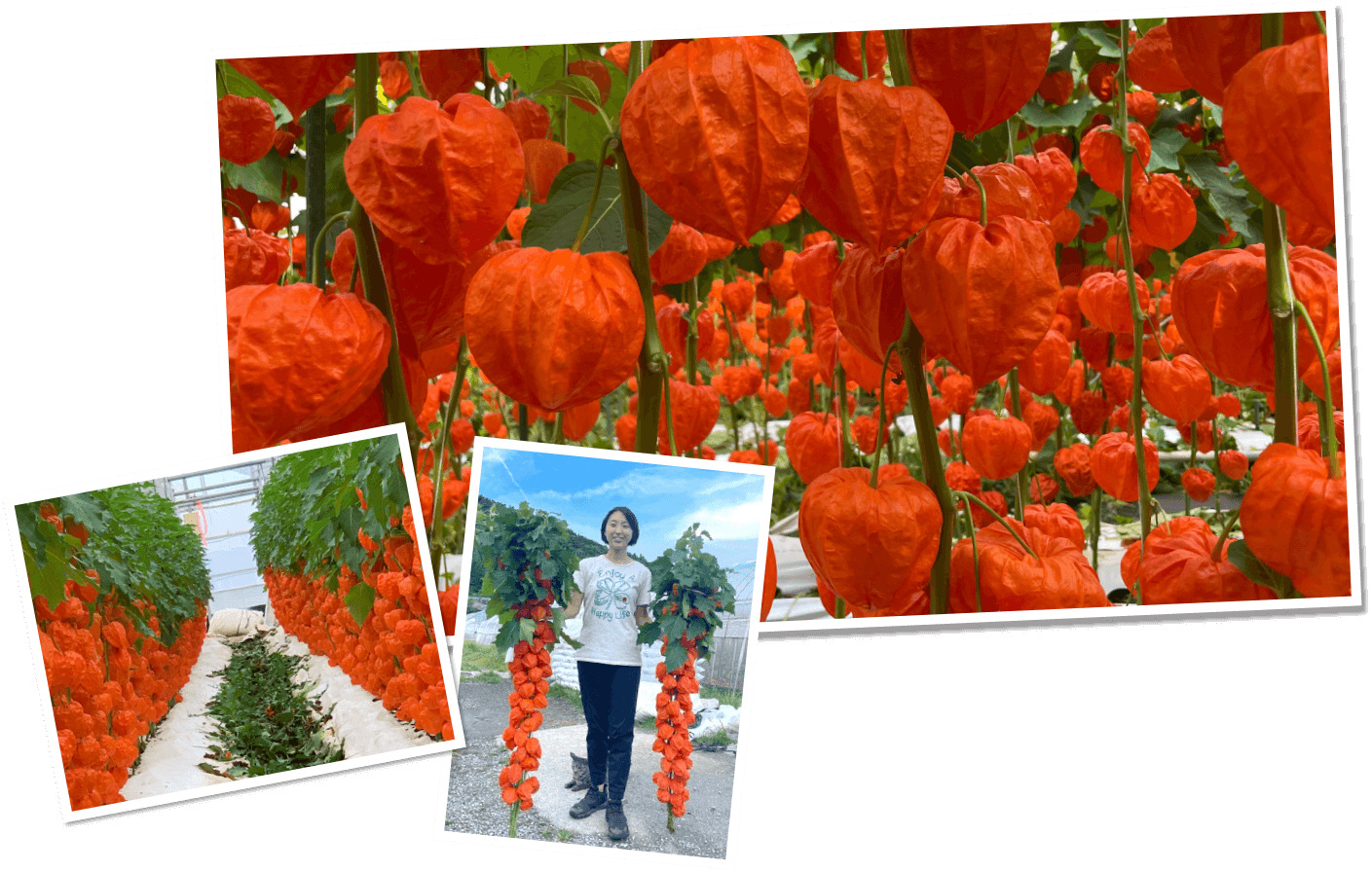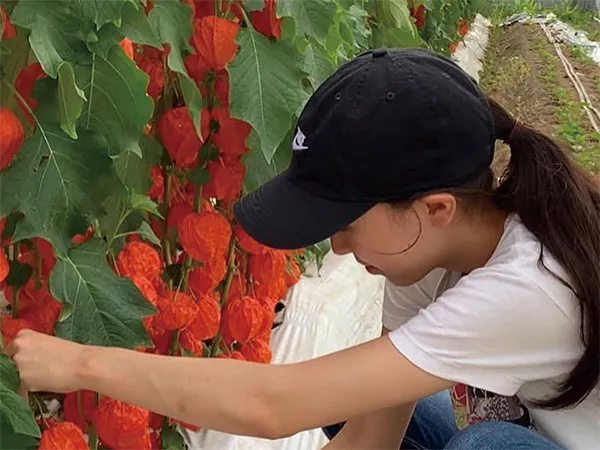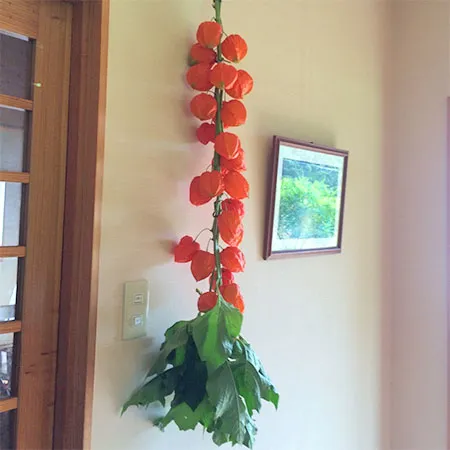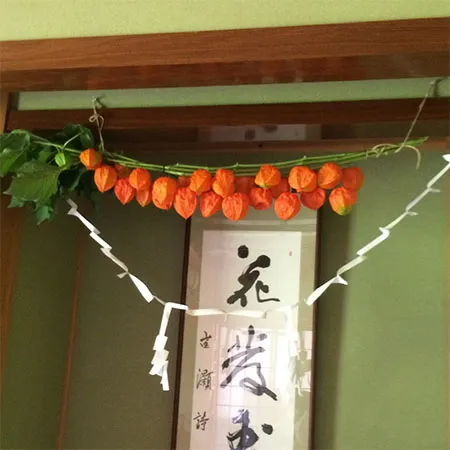
- Hozuki is an essential offering for the Obon festival.
The red hozuki is used as a lantern to guide the ancestors, ensuring they don’t lose their way, and it is traditionally displayed during Obon.




The name is commonly written in kanji as “鬼灯”. It can also be written as “酸漿” or “法月”.
There are several theories regarding the origin of the name “ほおずき” (hoozuki).
One theory suggests it comes from the way children play by puffing their cheeks, leading to the name “頬突き” (cheek-puffing).
Another theory is that it is related to the fact that the plant attracts the “ホホ” (hoho) bug, leading to the name “ホホ付き(好き)” (hoho-tsuki), meaning “having hohos” or “liked by hohos.”

Hozuki is native to East Asia.
It is a perennial plant from the nightshade family (Solanaceae) that produces off-white flowers.
The orange “fruit” is actually a large, pouch-like calyx that has developed, inside which there is a small fruit.


